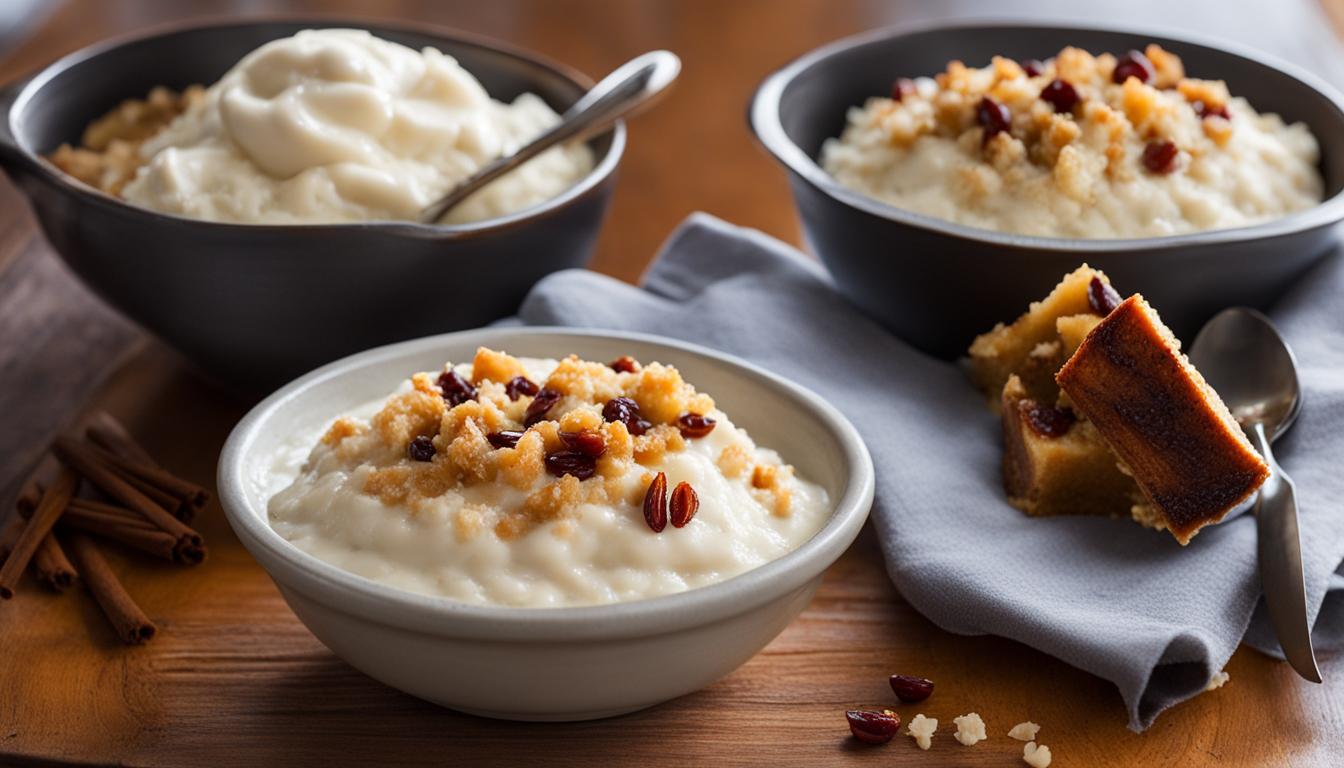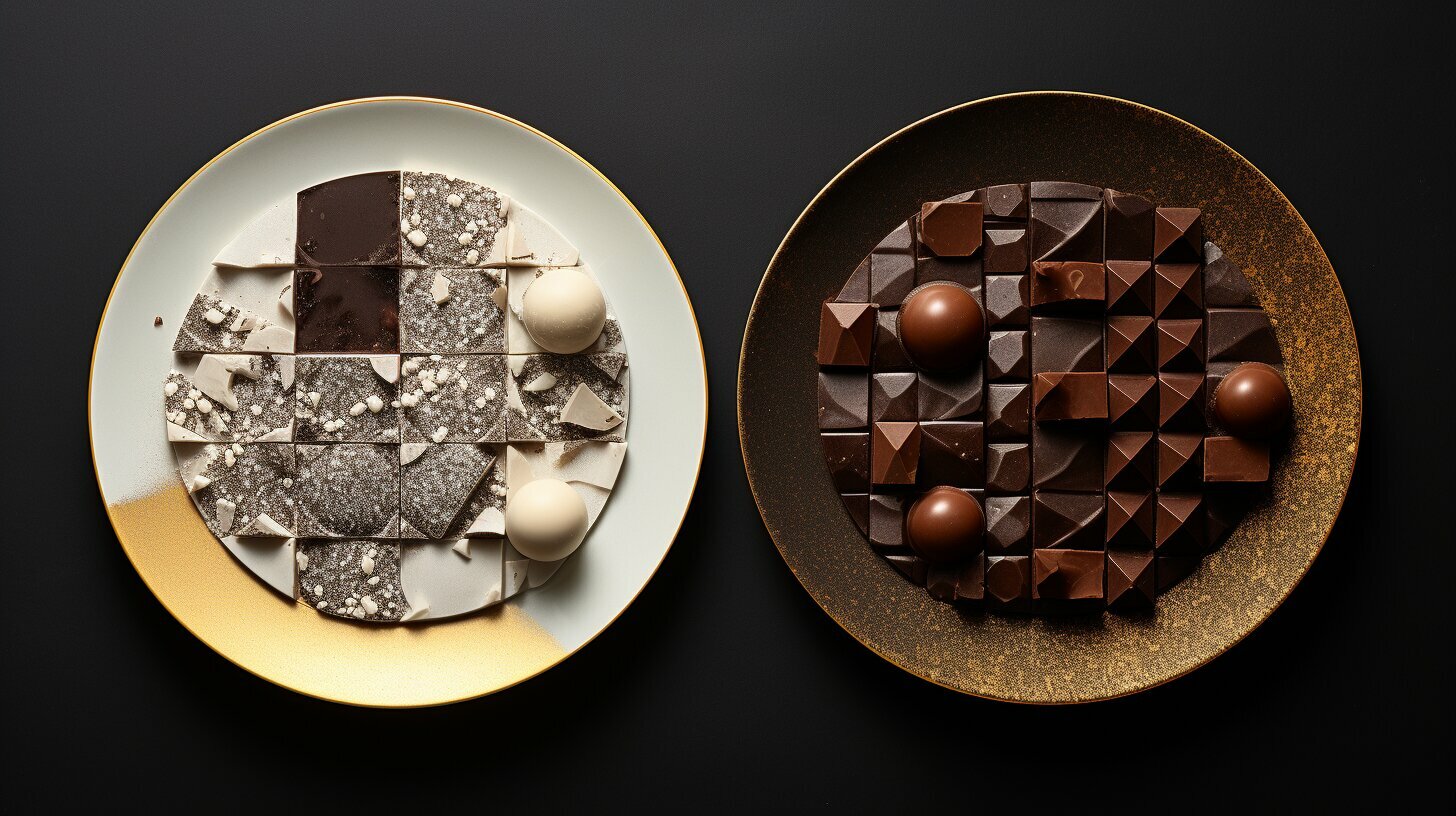When it comes to indulgent desserts, flan and crème brûlée are two classics that immediately come to mind. Both are creamy, rich, and have a custard base, making them ideal for satisfying a sweet tooth. However, despite their similarities, there are some key differences that set them apart. In this article, we’ll dive into the comparison between flan and crème brûlée, exploring their origins, ingredients, textures, and preparation methods.
Key Takeaways:
- Flan and crème brûlée are both creamy, indulgent desserts with a custard base.
- Despite their similarities, there are key differences in their origins, ingredients, textures, and preparation methods.
- Understanding the differences between flan and crème brûlée can help you appreciate them even more.
History and Origins
Before diving into the differences between flan and crème brûlée, it’s important to understand their culinary history and origins. Both desserts have a custard base, but their roots are quite different.
Flan originated in ancient Rome, where it was known as “tyropatinam.” The dish was later adopted by the Spanish and brought to Mexico during colonization, where it became a popular sweet treat. In Europe, flan was typically made with savory ingredients, such as cheese and meat, before sugar was added to create the dessert we know today.
Custard, on the other hand, has been traced back to medieval Europe. It was popular among the wealthy due to the high cost of ingredients, which included eggs, milk, and sugar. Over time, custard evolved into a versatile dessert that could be served hot or cold and flavored with various ingredients.
Crème brûlée, also known as burnt cream, emerged in 17th century France. It was originally a simple dessert of custard topped with caramelized sugar, but over time, various flavors and presentation styles were introduced.
While flan and custard share a similar history, crème brûlée came about centuries later and is often considered a more modern dessert.
Ingredients and Texture
Despite their differences, flan and crème brûlée share some similarities in terms of their ingredients and texture.
Both desserts have a custard base made from eggs, milk, and sugar. However, while flan usually includes whole eggs, crème brûlée typically uses only egg yolks. This difference contributes to the denser texture of crème brûlée, which is creamier and richer than flan.
Another similarity between flan and crème brûlée is the use of caramel in their preparation. For flan, caramel is poured into the bottom of the mold before adding the custard mixture, while for crème brûlée, sugar is caramelized on top of the custard with a blowtorch or broiler.
Both desserts can be flavored with vanilla, citrus, or other spices to enhance their taste and aroma. However, crème brûlée offers more room for experimentation with non-traditional flavors, such as lavender, matcha, or chocolate.
Overall, while flan and crème brûlée may differ in their ingredients and texture, they both offer an indulgent and satisfying treat that’s perfect for any occasion.
Preparation Methods
While flan and crème brûlée share a custard base, their preparation methods vary significantly.
Flan is typically made by baking a mixture of eggs, milk, sugar, and vanilla in a water bath, which helps the custard cook evenly and prevents it from curdling or cracking. Once cooled, the flan is inverted onto a serving dish and topped with caramel sauce.
On the other hand, crème brûlée involves a two-step process of first heating cream, sugar, and vanilla on a stove and then whisking it into beaten egg yolks. The resulting mixture is poured into ramekins and baked in a water bath until set. Once cooled, a thin layer of sugar is sprinkled over the top of each ramekin and caramelized with a kitchen torch or broiler, creating a crispy, caramelized crust that adds texture and contrast to the creamy custard below.
While both desserts require careful attention to detail to achieve the desired results, the unique techniques and equipment used in each recipe give them their distinct characteristics.
Traditional vs Modern Variations
While traditional flan and crème brûlée recipes have been cherished for generations, modern chefs and bakers alike have infused their own twists and creativity into these classic desserts. Here are some traditional versus modern variations:
| Traditional Flan | Modern Crème Brûlée |
|---|---|
| Flan de Leche: This classic Spanish flan is made with condensed and evaporated milk, eggs, sugar, and vanilla extract. It’s baked in a water bath and typically served with a caramel sauce. | Lavender Crème Brûlée: This floral twist on the classic crème brûlée uses lavender extract or dried lavender buds to infuse a fragrant flavor into the custard. It’s usually torched with a layer of caramelized sugar on top. |
| Coconut Flan: This variation swaps out the milk for coconut milk and adds shredded coconut to the custard mixture. It’s also baked in a water bath and served with a caramel sauce. | Matcha Crème Brûlée: Instead of vanilla, this crème brûlée uses matcha powder to create a green tea flavor. A layer of sugar is torched on top to create a caramelized crust. |
Another modern twist on crème brûlée is the use of different types of sugars, such as brown sugar or even maple syrup, to create unique flavors and textures. Some bakers have also experimented with using non-traditional flavors like rosewater or earl grey tea to infuse a new twist into the classic dessert.
Ultimately, whether you prefer the tried-and-true flavors of a traditional flan or the creative modern take on crème brûlée, both offer a decadent and delicious dessert experience.
Conclusion
In conclusion, it’s clear that flan and crème brûlée have their unique characteristics, from their origins and ingredients to their textures and preparation methods. While flan has a long history and is beloved for its simplicity and creamy texture, crème brûlée has emerged as a modern twist with its crunchy caramelized top and diverse flavor options.
Both desserts offer a tasty and indulgent experience, and it ultimately comes down to personal preference when choosing between them. Whether you’re a fan of the traditional or the modern, flan and crème brûlée are two desserts that are sure to satisfy your sweet tooth and leave a lasting impression.
FAQ
Q: What is the main difference between flan and crème brûlée?
A: The main difference between flan and crème brûlée lies in their texture and final presentation. Flan has a silky smooth texture and is typically served in a caramel sauce, while crème brûlée has a creamy custard texture with a caramelized sugar topping.
Q: Are the ingredients used in flan and crème brûlée the same?
A: Yes, both flan and crème brûlée share similar ingredients such as eggs, milk or cream, sugar, and vanilla. However, the proportions and specific types of ingredients used may vary slightly in each recipe.
Q: How do you prepare flan and crème brûlée?
A: Flan is typically prepared by whisking together the ingredients, pouring the mixture into a caramel-lined mold, and baking it in a water bath. Crème brûlée, on the other hand, involves gently cooking the custard mixture on the stovetop, pouring it into ramekins, and then baking it in the oven. Before serving, a layer of sugar is sprinkled on top of the custard and caramelized with a torch or broiler.
Q: Can you provide some variations of flan and crème brûlée?
A: Absolutely! Both flan and crème brûlée have various flavor variations. For example, you can add citrus zest, chocolate, coffee, or even liqueur to the custard mixture. Additionally, you can experiment with different toppings or garnishes, such as fresh fruits or a dusting of cinnamon.
Q: Which one is more traditional, flan or crème brûlée?
A: Flan has a longer history and is considered a more traditional dessert, especially in Latin American and Spanish cuisine. Crème brûlée, on the other hand, is a French dessert that gained popularity in the late 19th century. However, both desserts have evolved over time and can be enjoyed in traditional or modern variations.
 Skip to main content
Skip to main content


